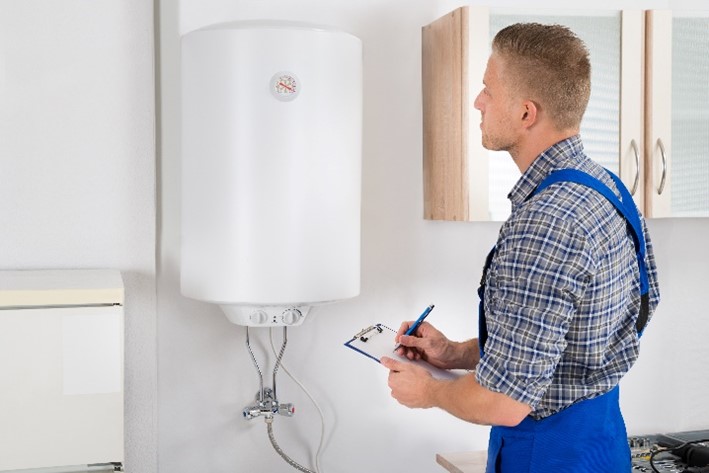Simple Methods to Care for Your Home's Hot Water System Properly
Simple Methods to Care for Your Home's Hot Water System Properly
Blog Article
They are making several good observations about Tips For Maintaining Your Hot Water Heater overall in the content followed below.
:max_bytes(150000):strip_icc()/how-to-drain-a-water-heater-2719055-hero-35f0548b0f1f42f0b13ba96a33ab8da2.jpg)
Warm water is vital for day-to-day comfort, whether it's for a revitalizing shower or washing meals. To guarantee your hot water system runs successfully and lasts longer, normal maintenance is essential. This write-up offers sensible tips and understandings on just how to preserve your home's warm water system to avoid disturbances and pricey repair work.
Intro
Maintaining your home's hot water system may appear challenging, yet with a few straightforward actions, you can ensure it operates efficiently for years to find. This overview covers everything from comprehending your warm water system to DIY maintenance ideas and knowing when to contact specialist help.
Significance of Keeping Your Warm Water System
Regular maintenance not just expands the lifespan of your hot water system yet additionally ensures it operates effectively. Disregarding maintenance can result in reduced performance, greater energy expenses, and also early failing of the system.
Signs Your Hot Water System Requirements Upkeep
Recognizing when your warm water system requires attention can avoid major problems. Keep an eye out for indicators such as inconsistent water temperature, unusual noises from the heating unit, or rustic water.
Recognizing Your Warm Water System
Before diving right into upkeep jobs, it's handy to understand the basic components of your hot water system. Generally, this includes the water heater itself, pipes, anode rods, and temperature controls.
Regular Monthly Upkeep Tasks
Regular monthly checks can help catch minor issues before they escalate.
Flushing the Water Heater
Flushing your water heater removes debris accumulation, enhancing efficiency and lengthening its life.
Monitoring and Replacing Anode Rods
Anode rods protect against deterioration inside the storage tank. Evaluating and changing them when worn is important.
Checking and Adjusting Temperature Setups
Readjusting the temperature level setups makes sure ideal performance and safety.
DIY Tips for Upkeep
You can do a number of maintenance tasks yourself to maintain your warm water system in top condition.
Checking for Leakages
Consistently examine pipes and connections for leakages, as these can cause water damage and higher costs.
Examining Stress Relief Valves
Testing the stress safety valve ensures it functions appropriately and stops extreme pressure build-up.
Protecting Pipes
Protecting hot water pipes lowers warm loss and can save power.
When to Call an Expert
While DIY upkeep is useful, some concerns need professional expertise.
Complicated Issues Calling For Expert Help
Instances include significant leaks, electrical issues, or if your water heater is continually underperforming.
Routine Professional Upkeep Advantages
Specialist maintenance can consist of extensive examinations, tune-ups, and making sure compliance with security standards.
Verdict
Regular upkeep of your home's hot water system is crucial for effectiveness, long life, and expense financial savings. By complying with these pointers and knowing when to look for specialist help, you can guarantee a trusted supply of hot water without unforeseen interruptions.
How to Maintain an Instant Hot Water Heater
Before tinkering with your hot water heater, make sure that it’s not powered on. You also have to turn off the main circuit breaker and shut off the main gas line to prevent accidents. Also turn off the water valves connected to your unit to prevent water from flowing into and out of the appliance. 2. When you’re done, you have to detach the purge valves’ caps. These look like the letter “T†and are situated on either side of the water valves. Doing so will release any pressure that has accumulated inside the valves while at the same time avoid hot water from shooting out and burning your skin. 3. When the purge valves’ caps are removed, you have to connect your hosing lines to the valves. Your unit should have come with three hoses but if it didn’t, you can purchase these things from any hardware or home repair shops. You can also get them from retail stores that sell water heating systems. Read the user’s manual and follow it to complete this task properly. When the hosing lines are connected, open the purge port’s valves. 4. You should never use harsh chemical cleaners or solutions when cleaning your unit. Make use of white vinegar instead. It should be undiluted and you’ll probably use about 2 gallons. 5. Now flush your water heater. This task should probably take about 40 minutes. We can’t give you specific directions for this because the procedure is carried out depending on the type, model and brand of your heater. With that being said, refer to the user’s manual. 6. When you’re done draining the unit, you have to turn off the purge port valves again. Remove the hosing lines that you earlier installed on each of the water valves. Put the valve caps (purge port) back in their respective places and be very careful so as not to damage the rubber discs that are found inside these caps. 7. Now that everything’s back in place, check your user’s manual again to find out how to reactivate your water heating system. 8. Once it is working, turn one of your hot water faucets on just to let air pass through the heater’s water supply pipes. Leave the tap on until water flows smoothly out of it. https://www.orrplumbing.com/blog/2014/september/how-to-maintain-an-instant-hot-water-heater/

Do you enjoy reading about Water Heater Maintenance Tips You Can't Afford to Forget? Make a review down the page. We'd be delighted to know your opinions about this entry. Hoping that you visit us again in the near future. Sharing is caring. You won't know, you could be doing someone a favor. Many thanks for your time invested reading it.
Get A Quote Report this page